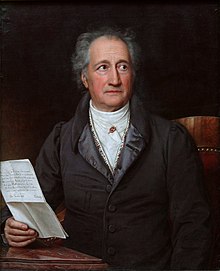
In social sciences and in medicine, the term “Werther-effect” is used as a synonym for media induced imitation effects of suicidal behavior. The term was coined following the publication of Johann Wolfgang von Goethe’s novel The Sorrows of Young Werther, which tells the story of a romantic infatuation that ends in suicide. One of these aspects is the detailed description of Werther s mental state, which suggests that suicidality plays a role in the novel a long time before the suicidal act at the end.
The first scientific use of the phrase ‘Werther Effect’ was by David Phillips in 1974, in his pioneering study investigating the influence of suggestion on suicide.

It was found that, between 1947 and 1968, suicides increased immediately after publication of a death by suicide in newspapers in Britain and the US. This increase was found to be restricted mainly to the region in which the news story was circulated.
In Austria, “Media Guidelines for Reporting on Suicides”, have been issued to the media since 1987 as a suicide-preventive experiment. Since then, the aims of the experiment have been to reduce the numbers of suicides and suicide attempts in the Viennese subway and to reduce the overall suicide numbers. After the introduction of the media guidelines, the number of subway suicides and suicide attempts dropped more than 80% within 6 months. The increase of passenger numbers of the Viennese subway, which have nearly doubled, and the decrease of the overall suicide numbers in Vienna (-40%) and Austria (-33%) since mid-1987 increase the plausibility of the hypothesis, that the Austrian media guidelines have had an impact on suicidal behavior. Changing the nature of media reporting on suicides could actually serve to reduce the suicide rate – something known as the Papageno Effect. By presenting those at risk of death by suicide with successful coping stories and strategies, as well as making mention of mental health services, it could see rates reduce.